This is my city... Magangué

Magangué. That is the name of my city of birth and although it is a bit strange to say, it is much less complicated than if you were to try to pronounce magangueleñidad, which is the name of the festivities celebrated on the 28th October in celebration of the city's foundation. The name Magangué comes from a Zenú chief (indigenous Colombian tribe) called Maguey that lived on these lands more than 500 years ago.
My little city is also known as the city of rivers, capital of the rivers or princess of the rivers. In short, you can call it what you like, the sure thing is that, in the south, it borders the Magdalena river (the most important river in Colombia) and this is also where two other very important rivers flow: the Cauca and San Jorge rivers.
Getting to Magangué is easy, and I will explain how to get there from Cartagena de Indias, which is the capital of our department. You just have to go to the terminal and take a bus to Magangué, usually there is one every 2 or 3 hours, and in about 4 hours you will have reached the princess of the rivers; the price of the bus ticket is usually 10 dollars (around 8/ 9 pounds), although during the end of the year and mid-year holidays, it usually goes up to almost 20 dollars (around 16 pounds). If you want to get there sooner you could also take a "Kia", which in reality are like a type of little van for 8 to 12 passengers. Of course, you have to not be bothered if it is completely full and that you have to pay around 5 dollars (around 4 pounds) more.
On the way, you will see many fascinating things. The first thing you will encounter will be the impressive Gambote bridge that rises over the dike canal that was built in the 16th century so that Cartagena de Indias a colonial collection centre could connect to the Magdalena river at that important time. Along the road, you will see the waters of this channel on both sides. After this, you will gradually reach the mountains of Maria, a set of mountains less than 1000 meters high. In this area you will find cities such as San Jacinto, where you can buy a backpack or a hammock made by hand with ancestral techniques, and Carmen de Bolívar, where you can stop and buy some Chepacorinas, a delicious, sweet cheese biscuit and some avocados. When you leave from there you will leave the mountains behind and enter the Sucreña savannah and before you have time to think about it, between the kilometres and kilometres of pastures, farm and livestock, you will have arrived in Magangué. Here the journey ends, but not the story.
How would I define Magangué? Well, I will only say that it is simply the best place to live. Because you can live very cheaply and very well, people are very cheerful and hardworking and the women are so beautiful that Gabriel García Marqués came to this port as a child and was so in love with a Magangueleña, who he would marry years later when he was older. Here you can find anything at a very good price in comparison to other cities along the Caribbean coast. In Magangué, you can enjoy all the coastal cuisine without spending too much money: a lunch consisting of a bocachico (tropical freshwater fish from Colombia), rice, patacón (plantain), salad and a good juice with water and panela (raw cane sugar) for 2 dollars (less than 2 pounds) and delicious natural juices for 1 dollar (less than 1 pound). If you ask me here you will find the best butifarras in the world, a sausage usually made with beef but here you not only find beef butifarras but also chicken, pork, fish and even vegetarian. You just have to ask for "el mono" (my dad: the prince of sausages).
- Note that the following link will take you to a page where I teach you how to prepare your own butifarras.
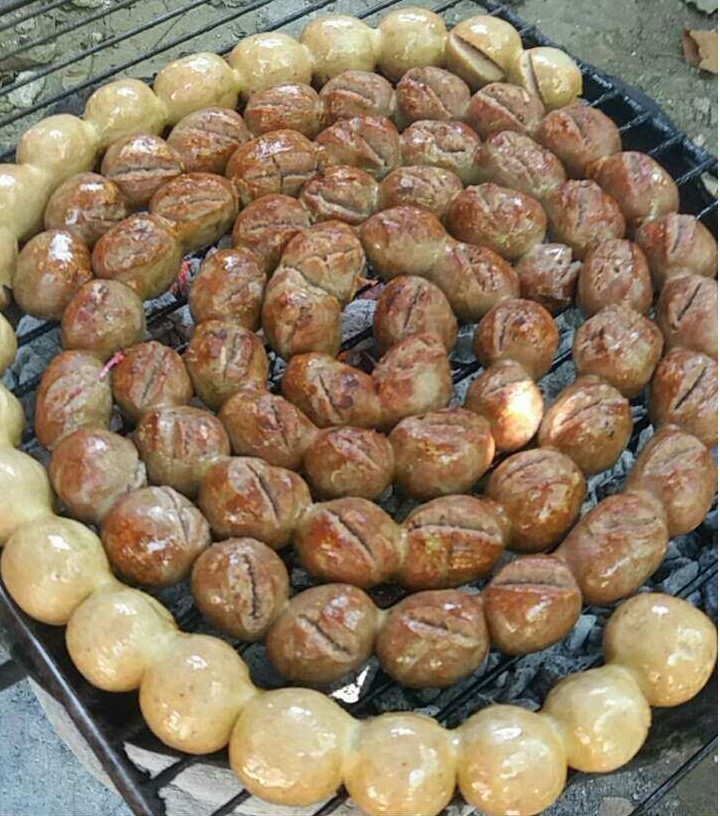
If you want to see some natural beauty, you should go to Punta de Piedra, a park on the edge of the big swampland where you will see the best sunsets that reflect off of the waters, as though they are an immense mirror.
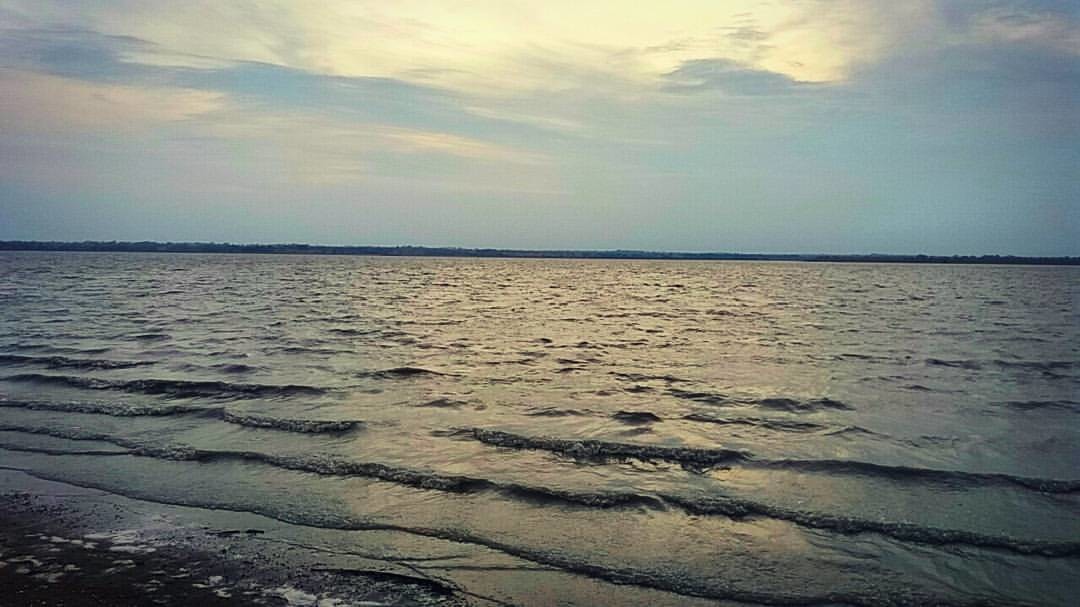
In Magangué you will also find artisanal products. You just have to go to Cascajal, a village on the outskirts where you can get hats, bags and wallets made of sará palm. And to get to know the first city to proclaim itself independent from Spain, Mompox, you only need to go to the dock, take a boat and enjoy the breezy route along the river. This magical and historical city can be found on the other side of the Magdalena river. And soon you can reach through the Roncador bridge, which is the longest in Colombia.
Now I am going to tell you about some other important places in the city.
Los modulares
There is a place in Magangué that I adore to go to at night with my friends or with my girlfriend, which is called Los Modulares and is in the centre of the city. The Modulares are very traditional because they were used for many years by several people looking to have a nice time. Many may wonder what the Los Modulares are. Well, to describe them in a simple way, one could say that they are small kiosks where they sell the best natural juices that you will ever taste. Best of all, the price for a large glass of the juice of your choice (strawberry, blackberry, orange, banana, pineapple, etc. ) has an attractive price of 3, 000 pesos, this is approximately one dollar, 0. 9 euros or 0. 8 pounds. Incredible, right? Especially since in other cities, like Cartagena, a juice of the size of this would have a price of approximately 15 thousand pesos. That is to say that they would cost five times more. Los modulares are located on the corner of Avenida Lequerica Vélez in front of the old house of culture and a few metres from the Américas Park.
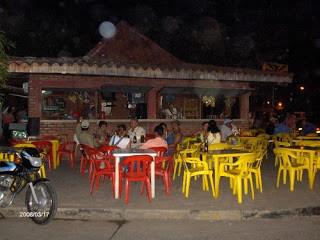
Américas Park
This is, without a doubt, one of the symbolic places of Magangué, and has existed since before I can remember. Unfortunately, some years ago it was not given due credit as the main meeting point and recreation area of the Magangueleños. However, today they have tried to recover what it always should have had: a place in the identity of all Magangueleños, and it was remodeled. Although it may still be a long way until it is a reference point at a departmental level, I think it is a very important step.
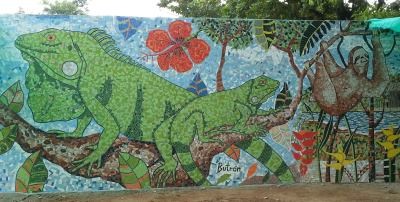
Something that fascinates me about the Américas Park is the mural of Butron, a plastic artist from our municipality who, with his works, teaches a bit of the culture and the roots of all Magangueleños to anyone who visits the city. Furthermore, there is a mural in the same way in the port and in the parque de la identidad of Magangueleños, which is made with the unique technique.
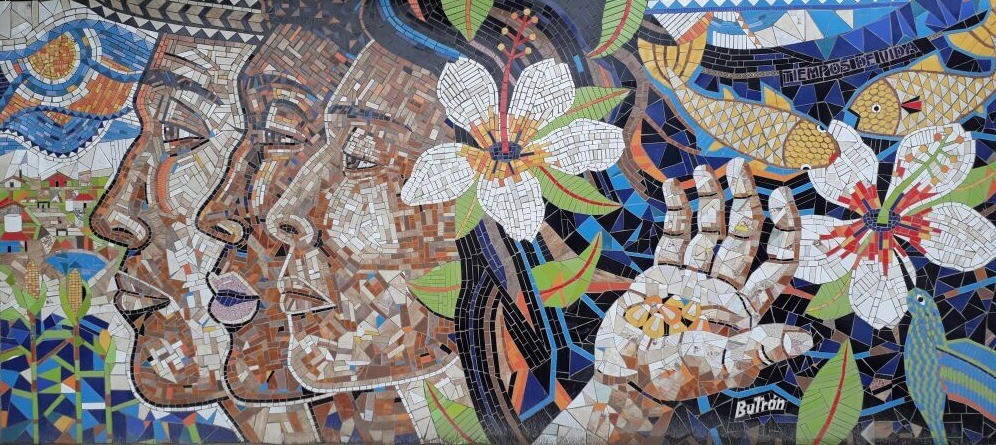
Festivities and traditions
Magangué has many festivities throughout the year, events ranging from the historical and the cultural to the religious. I will tell you about those that, in my humble opinion, are the most important.
Second of February: this is without doubt the biggest religious celebration in the city. Furthermore, many people from all over Colombia travel to here, moved by their faith in the brunette virgin. The days before 2nd February and the day itself are a huge party that could perhaps be compared to the end of year celebrations. Craft and gastronomic fairs are held and there are fireworks and live music. They also perform what is undoubtedly the most important event with the solemn mass: the procession, where the virgin walks through the main streets of Magangué. I remember having participated as a child with my parents. The processions are full of devotees and various other people who offer thanks to the virgin after having received a favour or for her to grant one. That is why it is normal to see people walking barefoot, walking backwards, giving out candles or letting them melt in their hands.
The epicentre of this whole celebration is the cathedral, the most important architectural work in the city that is stood in front of the Magdalena river. It is so important that it is mentioned in the city's hymn.
November Festivals: I dare to say that this is the biggest celebration in the whole city and, although a few years ago it was barely noticed, it has grown tremendously in recent years due to the support that the municipal administration has provided. This great party coincides with the independence celebrations in Cartagena, so it is not a party of its own as such but one that was born with the Cartagena people who lived in the city and that began to gain great importance over the years. Two or three days are declared civic during this party, and there are caravans with renowned national musical artists. The truth is that it is a mess that everybody enjoys.
I would warn you not to come out dressed in your best during the November festivities, if you spend them in my city, because it is likely that you could have water, flour or foam thrown over you at any corner, so think well.
Well it is true, I already told you all the good and the beautiful things about Magangué. You might now ask me what the catch is, but there is no catch. Just as with everything else there are bad things, but we would not appreciate the beauty of roses if we focused only on their thorns, although they cannot be put to one side and ignored. Magangué does not have the best road infrastructure, but you can get anywhere by “motorcycle taxi” for only 2 thousand pesos (65 cents or 48 pence). We don't have five-star hotels, but for 10 dollars (8/9 pounds), you can find some great places to spend the night. And finally, the heat. Many people jokingly call Magangué a hell due to the high temperatures, and although it is true that sometimes it is very hot there is nothing that a fan, a vent or an air conditioner cannot fix.
And as the song goes: “Esto es mi Magangué que yo te invito a conocer”. (this is my Magangué where I invite you to come).
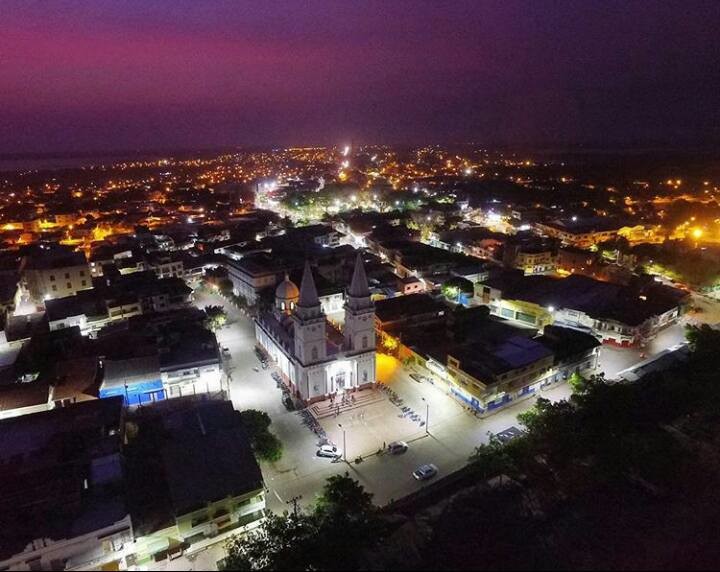
Photo gallery
Content available in other languages
- Español: Esta es mi ciudad... Magangué
Want to have your own Erasmus blog?
If you are experiencing living abroad, you're an avid traveller or want to promote the city where you live... create your own blog and share your adventures!
I want to create my Erasmus blog! →
















Comments (0 comments)